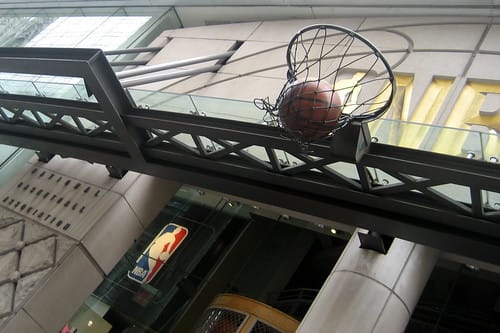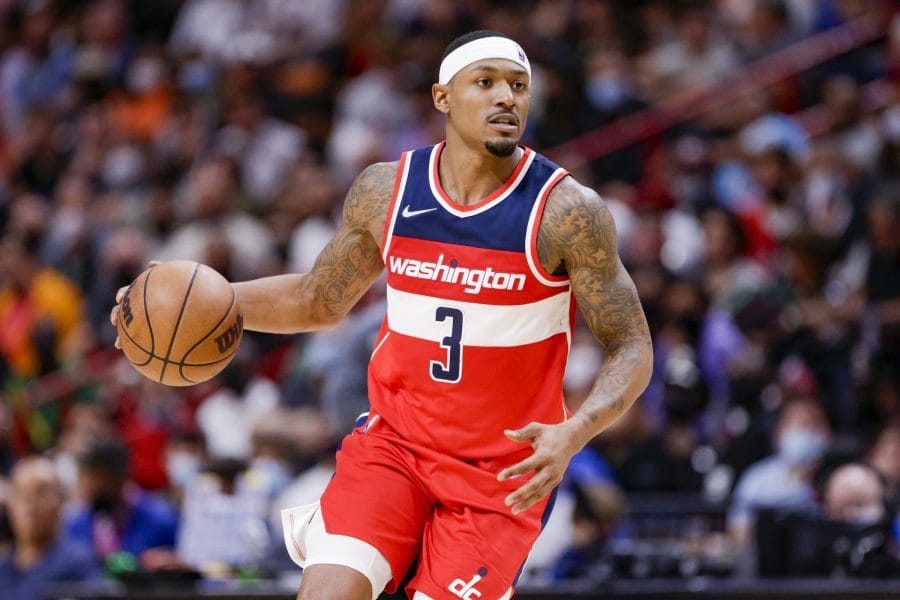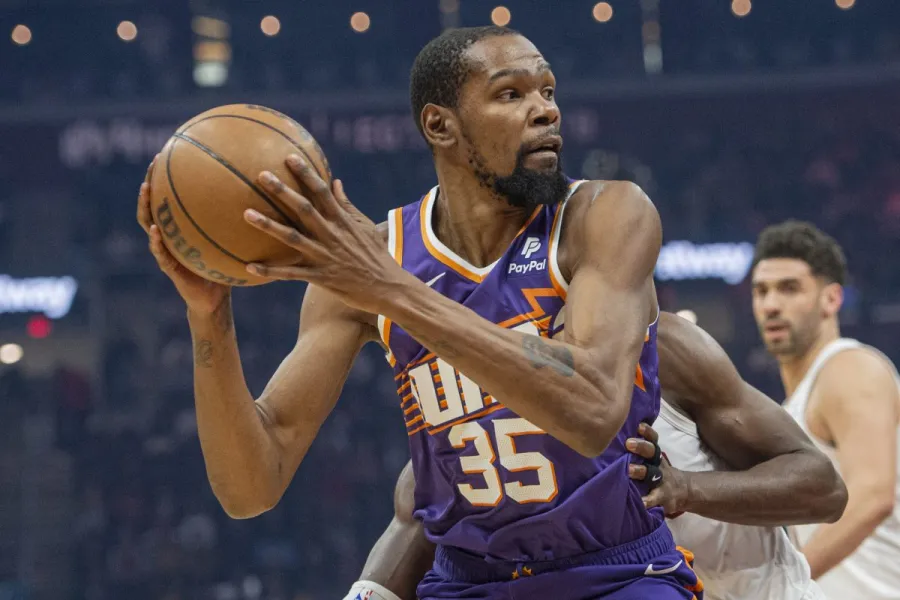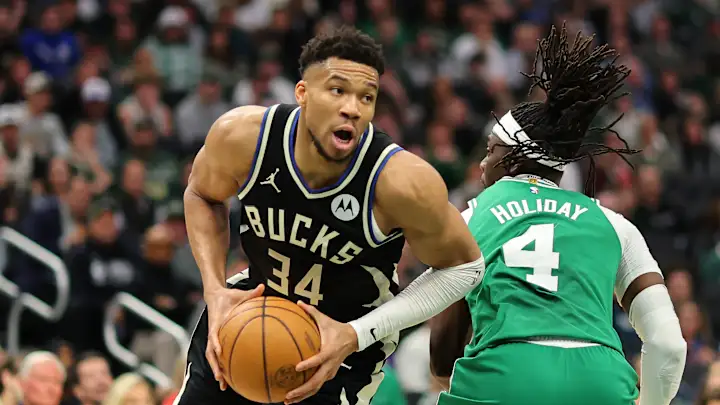The NBA is clearly on a mission to grow its global footprint. It’s arguably not quite as aggressive as – and is somewhat different from – the NFL’s strategy, but it is a strategy nonetheless. One of the keys to that is bringing the games to international fans, and the NBA has been doing that now for forty years. The first preseason NBA game abroad took place in Milan in 1984. Six years later, the NBA tried its ‘Tokyo experiment’ by bringing regular season games to Japan each year.
While regular season games take place in Mexico each year, it’s also no secret that the NBA has its sights set on France as a fertile market for growth. The Western European country is arguably the key region for the NBA’s international strategy, and it shows. In January, the league will be bringing two regular season games to Paris. Its also bringing its not-so-secret weapon to win over French fans, Victor Wembanyama.
The games between the San Antonio Spurs and Indiana Pacers will be 4th and 5th played in the French Capital since 2020, and it will be the first time a doubleheader is played there. It also marks France as being the preferred partner ahead of the UK. London’s 02 Arena held nine NBA regular season games across the 2010s, but it has held none since 2019.
Spurs will bring rising star Wembanyama home
The Global Games (as the NBA calls its international fixtures) do matter in terms of building broader engagement. Looking at this season’s NBA odds, it doesn’t feel like the Pacers vs. Spurs matchup is going to be between two championship contenders come January (the doubleheader is scheduled for the 23rd and 25th of January), but it still pits two interesting teams together, and there is also the Wembanyama factor.
Last season’s Rookie of the Year is probably the most talked about teenager in global basketball. He has the goods to become an elite-level star, perhaps even a once-in-a-generation talent. The fact he was born within a half-hour’s drive of the Accor Arena in Paris is a huge deal, and it’s also a huge marketing opportunity for the NBA. The NBA has had plenty of great French players, including one of the best defensive players currently in the league, Rudy Gobert. But Wembanyama has that extra-high ceiling.
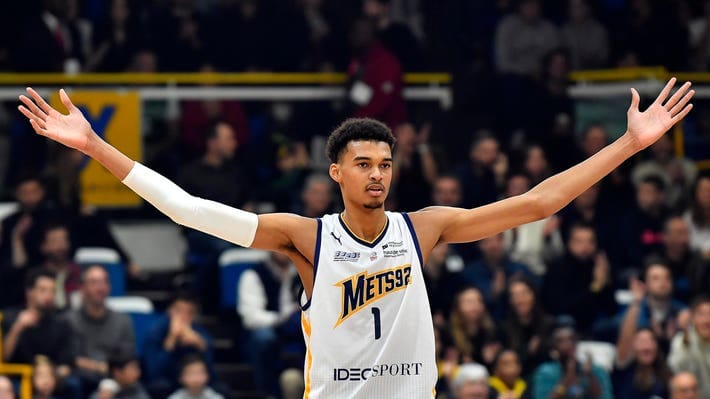
The French youth system is churning out quality players
We should also note that the No.1 and No.2 NBA Draft picks this year, Zaccharie Risacher and Alex Sarr, are French. With Tidjane Salaun drafted at No.6, it meant that three of the top 10 draftees were French. It’s an incredible swing, and it underlines the French youth system is on the rise. That, arguably more than bringing games to the country, will be the key to unlocking the market in France for the NBA.
There is a logic to the rise in France’s young talent pool. While soccer still leads the country in terms of participation, there is space for growth in basketball participation among the younger population, including the youthful immigrant population. We’d argue, too, that the French school system is a little more flexible and amenable to basketball than the more rigid UK, where schools tend to be married to soccer, rugby, and cricket. The NBA, too, has pumped money and resources into grassroots-level basketball in France.
The NBA’s Growing Focus on Global Markets
While the NBA’s strategy has long been to establish a dominant presence domestically, the league has significantly shifted its focus to global markets. One of the main drivers behind this is the increasing saturation of the U.S. sports market. The NBA’s international strategy recognizes that expanding globally offers a new frontier for both audience growth and financial revenue. This strategic pivot towards overseas markets has been accompanied by high-profile international exhibitions, grassroots programs, and partnerships with foreign media outlets.
The NBA’s international strategy revolves around targeting regions with a strong sports culture, solid infrastructure for broadcasting, and a growing interest in basketball. Whether through staging regular season games in various countries or launching NBA academies abroad, the league’s efforts to foster talent and capture the hearts of international fans have become a cornerstone of its business model. These efforts are about more than just making money—they are about building a lasting basketball culture in countries that show potential to adopt the sport on a broader scale.
The NBA Academy: Cultivating International Talent
One key part of the NBA’s international strategy has been the establishment of NBA academies around the world. These are elite training centers designed to develop the next generation of international basketball talent. The NBA currently has academies in countries like Senegal, India, and Australia, among others, aiming to create a steady pipeline of international players who can ultimately enter the league.
The NBA’s international strategy in creating these academies is not only to elevate talent but also to establish deep-rooted relationships with local sports communities. These training facilities offer young athletes world-class coaching, exposure to NBA-style play, and, most importantly, a pathway to the global basketball stage. By helping to grow basketball talent in underrepresented regions, the NBA is ensuring that its future stars may come from anywhere, not just traditional basketball powerhouses like the United States.
Media Rights and Global Broadcasting Deals
A significant part of the NBA’s international strategy revolves around securing lucrative broadcasting deals. The league understands that the way to engage a global audience is to make its games accessible to fans wherever they may be. Partnerships with major networks like ESPN, and international sports broadcasters such as Sky Sports, have been key to growing the NBA’s footprint overseas. With media rights set to be renegotiated soon, the NBA is poised to ink deals that could further enhance its global outreach.
Moreover, streaming platforms such as NBA League Pass allow international viewers to watch live games and exclusive content. These digital platforms are critical to the NBA’s international strategy as they target markets where traditional television might not be as prevalent but where mobile devices are ubiquitous. In emerging basketball markets like India and parts of Southeast Asia, mobile streaming has become an important tool for driving viewership and engagement.
Basketball’s Rising Popularity in Africa and Latin America
While France remains a focal point for the NBA’s international strategy, the league has also set its sights on other burgeoning basketball markets. In Africa, for instance, the creation of the Basketball Africa League (BAL) in 2021 marked a significant step towards expanding the NBA’s footprint on the continent. This league, held in partnership with the NBA and FIBA, has been instrumental in creating opportunities for African talent while bringing professional basketball to a new audience.
Latin America is also on the NBA’s radar. Countries like Brazil and Argentina already have a strong basketball tradition, and the NBA’s international strategy includes targeting these markets with exhibitions and partnerships with local basketball federations. The NBA has been particularly interested in expanding its presence in Mexico, where it has hosted regular-season games and invested in grassroots basketball development.
The Role of Technology in the NBA’s Global Expansion
Another crucial component of the NBA’s international strategy is leveraging technology to bridge the gap between the league and international fans. Through advancements in virtual reality (VR) and augmented reality (AR), fans around the world can experience NBA games in a more immersive way. This has been particularly appealing during the pandemic, where travel restrictions and limited fan attendance made it difficult for international fans to experience games in person.
The NBA has experimented with VR broadcasts, allowing fans to watch games from a courtside perspective without ever leaving their living rooms. These technologies, along with AI-powered analytics, allow international fans to engage with the game in new ways, from in-depth statistical analysis to creating fantasy teams based on real-time player performance. The ability to interact with the NBA on such an advanced level is central to the league’s goal of creating lifelong fans, regardless of their geographic location.
NBA must look to other countries for expansion
Of course, it would be illogical for the NBA to throw everything at France. From Australia to China to Central Africa to Eastern Europe, there is a growing appetite for basketball, and it’s not as if the NBA wants to create a 51st state and leave it there. But the prize seems attainable and inevitable in France. The young players are coming through, there is a fertile market for broadcasting, and a population keen to participate as fans. It makes a lot of sense that the NBA is increasing its presence, and it looks like it’s going to be a strategy that comes off.

